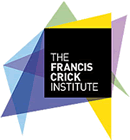Dr R Priya
No more applications being accepted
Funded PhD Project (Students Worldwide)
About the Project
This 4-year PhD studentship is offered in Dr Rashmi Priya’s Group based at the Francis Crick Institute (the Crick).
Organs are sculpted by individual cells that dynamically remodel their form while diversifying their molecular fate to generate stereotypical patterns. Yet, our understanding of how change in cell morphology impacts cell fate decision during organogenesis remains poorly understood. Using interdisciplinary approaches like in vivo quantitative imaging, optical/mechanical manipulations, elegant genetic tools and embryological interventions, this project aims to address this fundamental problem in developmental biology using a well-suited vertebrate model system – zebrafish heart, a system highly amenable to various genetic and optical perturbations.
Heart is the first organ to form and function during embryonic development [1]. To supplement the increasing physiological demands of the growing embryos, the cardiac tissue develops numerous specialized structures for maximum efficiency. One such critical step in vertebrate cardiac development is trabeculation [2]. During trabeculation, a primitive myocardial wall transforms from a monolayer to a complex 3D structure consisting of two distinct cell types: outer compact layer and inner trabecular layer cardiomyocytes (CMs) (Fig. 1). Notably, while the CMs are undergoing these complex morphological transitions, they also acquire distinct cell fate. The compact layer CMs are apicobasally polarized and activate Notch and Taz signalling, while the inner trabecular CMs lose their apicobasal polarity and are devoid of Notch and Taz signalling [3]. We have recently identified a crucial role of actomyosin tension heterogeneity in triggering this morphological transition and cell fate specification (paper in press). Our model entails that contractility induced CM delamination is sufficient to trigger Notch activity in the adjacent compact layer CMs to generate a patterned myocardial wall (Fig. 1). Yet, the question remains how binary Notch activity (ON and OFF) is generated at the single cell level in a developing heart [4]. To address this question, we hypothesize that differential cell shape triggers differential Notch signalling. To test this hypothesis, we will:
- dissect the spatiotemporal activation of Notch signalling at single cell resolution in a developing heart using live reporters, knock-in technology, immunolocalization and high-resolution live confocal imaging.
- combine live transgenic reporters with ectopic deformation of cell shape/mechanics through genetic/optogenetic/mechanical manipulations to address how the physical parameters of a cell – shape/contractility/polarity regulate Notch activation.
- combine transcriptional profiling with cell biological approaches to dissect the significance of Notch activation on CM molecular and cellular properties during trabecular morphogenesis.
- endeavour to integrate theoretical simulations with in vivo experimentations to gain a comprehensive understanding of how Notch exhibits switch-like behaviour to generate right spacing and patterns during development.
Candidate background
I am particularly interested in receiving applications from candidates with a background in cell/developmental biology and an interest in using interdisciplinary approaches/tools in their research. Laboratory experience in zebrafish embryological techniques, zebrafish gene editing, confocal imaging, image analysis and molecular biology is preferred, but not a must.
Talented and motivated students passionate about doing research are invited to apply for this PhD position. The successful applicant will join the Crick PhD Programme in September 2021 and will register for their PhD at one of the Crick partner universities (Imperial College London, King’s College London or UCL).
Applicants should hold or expect to gain a first/upper second-class honours degree or equivalent in a relevant subject and have appropriate research experience as part of, or outside of, a university degree course and/or a Masters degree in a relevant subject.
APPLICATIONS MUST BE MADE ONLINE VIA OUR WEBSITE https://www.crick.ac.uk/careers-and-study/students/phd-students BY 12:00 (NOON) 12 November 2020. APPLICATIONS WILL NOT BE ACCEPTED IN ANY OTHER FORMAT.
Funding Notes
Successful applicants will be awarded a non-taxable annual stipend of £22,000 plus payment of university tuition fees. Students of all nationalities are eligible to apply.
References
1. Staudt, D. and Stainier, D. (2012)
Uncovering the molecular and cellular mechanisms of heart development using the zebrafish.
Annual Review of Genetics 46: 397-418. PubMed abstract
2. Rasouli, S.J. and Stainier, D.Y.R. (2017)
Regulation of cardiomyocyte behavior in zebrafish trabeculation by Neuregulin 2a signaling.
Nature Communications 8: 15281. PubMed abstract
3. Jimenez-Amilburu, V., Rasouli, S.J., Staudt, D.W., Nakajima, H., Chiba, A., Mochizuki, N. and Stainier, D.Y.R. (2016)
In Vivo Visualization of Cardiomyocyte Apicobasal Polarity Reveals Epithelial to Mesenchymal-like Transition during Cardiac
Trabeculation.
Cell Reports 17: 2687-2699. PubMed abstract
4. Shaya, O. and Sprinzak, D. (2011)
From Notch signaling to fine-grained patterning: Modeling meets experiments.
Current Opinion in Genetics & Development 21: 732-739. PubMed abstract

 Continue with Facebook
Continue with Facebook

